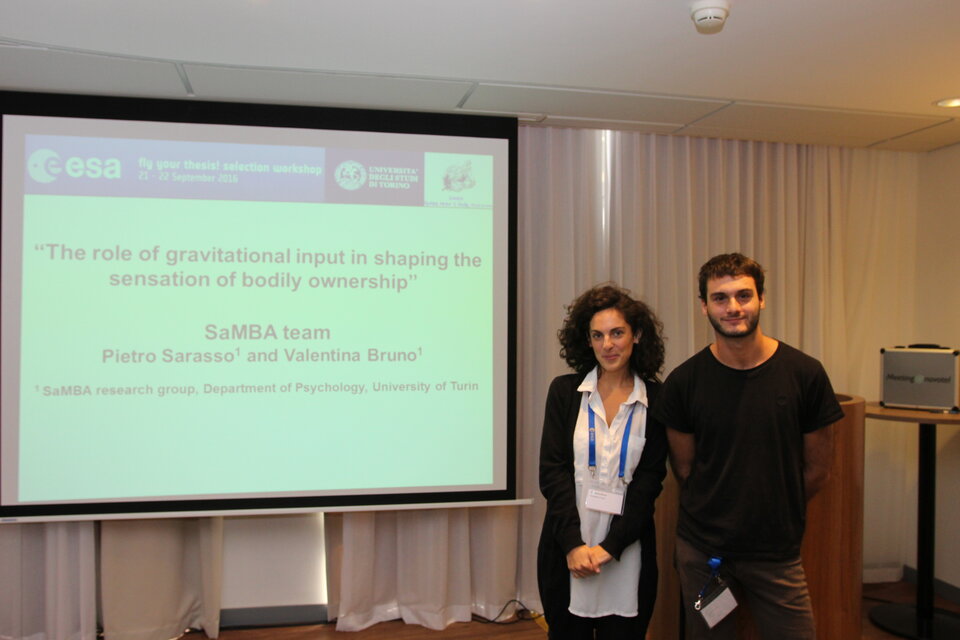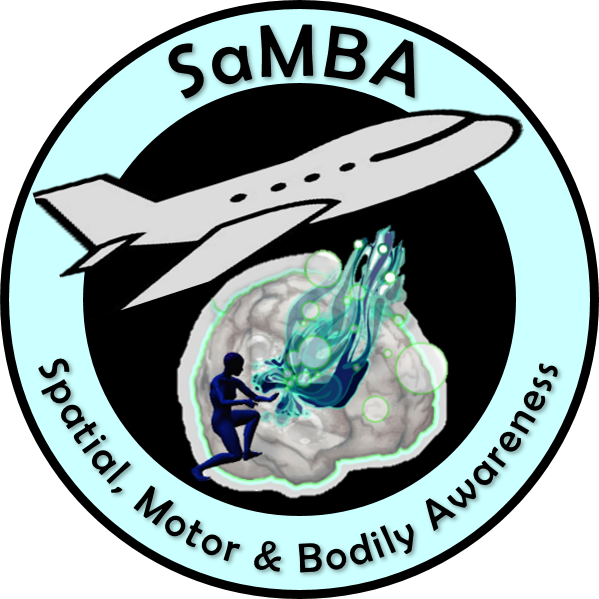Meet the teams: SaMBA
The SaMBA team is composed of three PhD and three Master students from the University of Turin in Italy. They aim to investigate the role of sensory inputs (e.g. visual, somatosensory, proprioceptive, gravitational) in modulating body and spatial awareness.
Modulation of spatial and body representation by altered gravitational input
| University | University of Turin, Italy |
| Endorsing professor |
Marco Neppi Modona University of Turin, Italy |
| ELGRA mentor | TBD |
| Team |
Pietro Sarasso Valentina Bruno Irene Artusio Elena Gallarà Virginia Batti Carlotta Fossataro |

The SaMBA team will investigate the role of sensory input (e.g. visual, somatosensory, proprioceptive, gravitational) in modulating body and spatial awareness. In everyday life, having precise knowledge of our bodies is necessary to allow us to interact successfully with our environment, and gravity is a fundamental sensory input that shapes both space and body representations.
Its influence is always taken into account by spatial cognition when we program the execution of motor actions. This experiment aims to assess whether and how altered gravitational input modifies subjects' body awareness. A well-established paradigm, able to manipulate the sense of body ownership in healthy subjects, is the Rubber Hand Illusion (RHI). During the RHI, the subject’s real hand is out of view, while a realistic rubber hand is placed internally to the real hand, in a position that is coherent with the subject’s body schema. When the experimenter simultaneously strikes the index finger of both the real and the fake hand, after a few seconds of viewing the fake hand’s finger being touched, a multisensory conflict between tactile, proprioceptive (coming from the real hand) and visual information (coming from the fake hand) occurs. The brain solves this conflict by incorporating the fake hand within its own body representation (i.e. the so-called embodiment phenomenon), and the subjects start to attribute the tactile sensation to the rubber hand, which they perceive as their own.

In their study, the SaMBA team takes advantage of the RHI to investigate the mechanisms responsible for the representation of the body in space, and to see how these mechanisms are dynamically adjusted and modulated in case of unconventional sensory inputs, such as augmented or diminished gravity. Firstly, they aim to replicate the classical RHI paradigm, performing the task on the ground (baseline condition). Then they will perform the RHI during a parabolic flight, in hypergravity and in zeroG condition. The illusory experience will be evaluated by standard procedures, such as a body ownership questionnaire and the proprioceptive drift. During parabolic flights, the team expects that the altered gravity conditions will modulate the multisensory (visual, tactile, and proprioceptive) conflict on which the illusory experience relies. The team expects to see a dominance of tactile and proprioceptive versus visual cues in hypergravity conditions, which can lead to an enhanced/more rigid sense of body ownership over the real hand and, as a consequence, to a decreased strength in experiencing the RHI. In the zeroG condition, they expect that a dominance of visual versus vestibular and proprioceptive cues will lead to a weaker/more flexible sense of body ownership over the real hand and, as a consequence, to an increased sensitivity to the illusion. These expected results, if experimentally confirmed, can improve the understanding of the mechanisms that the brain uses to shape the experience of our ‘self’ as a unitary body, where internal brain models of gravity can play a crucial role.
Read here the team's article in the Nature journal.

